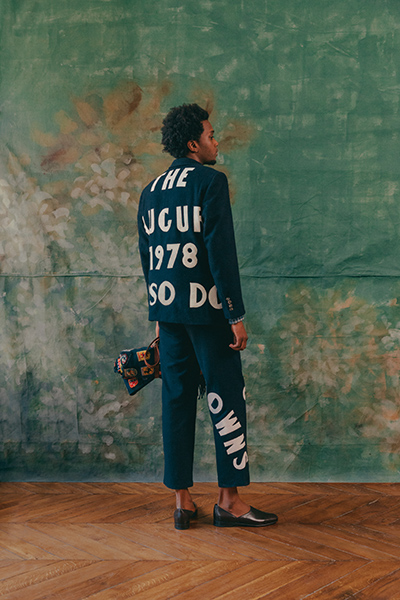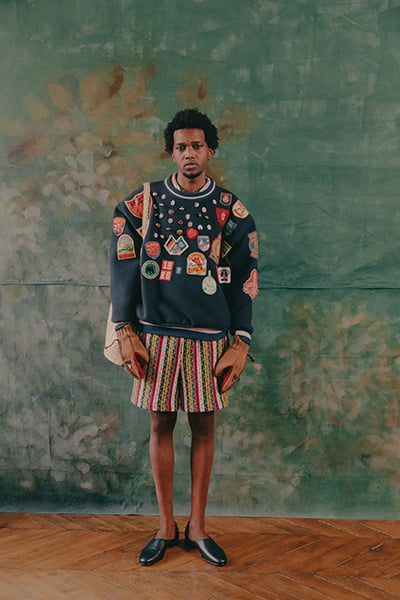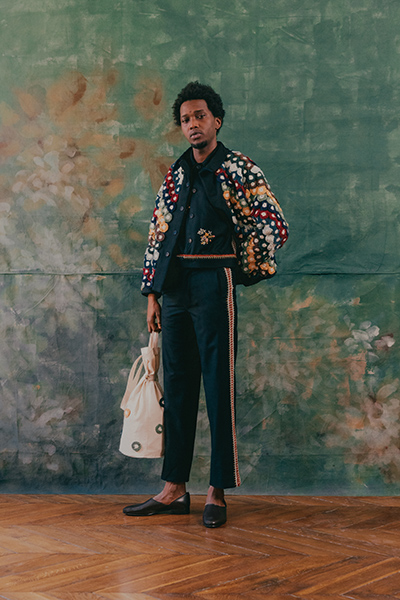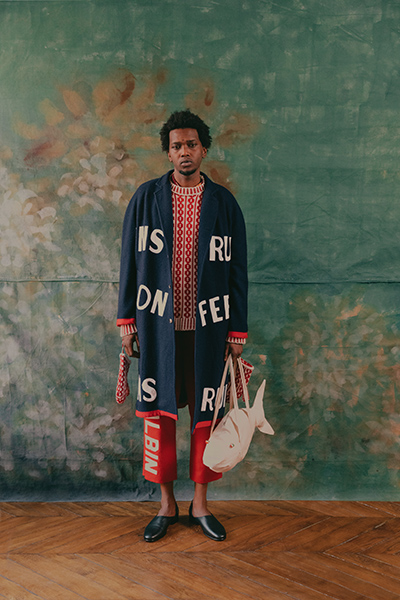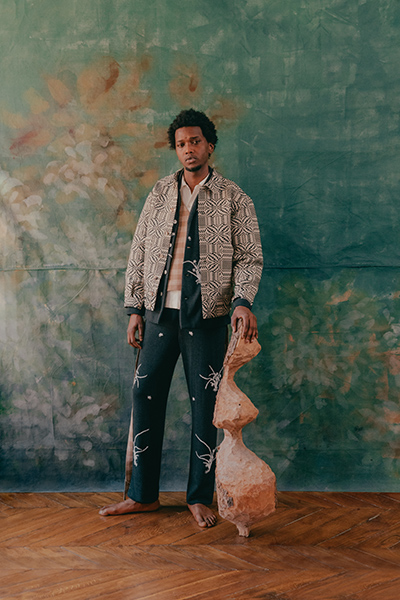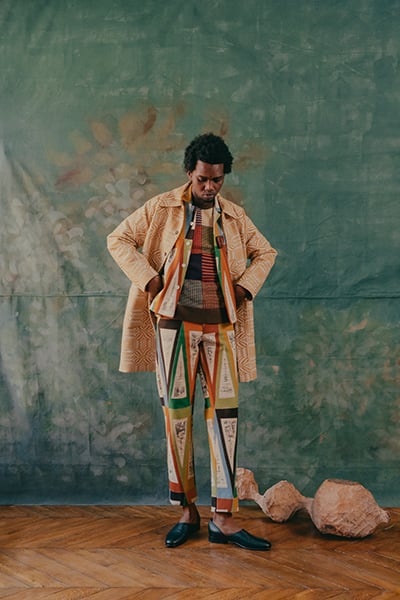Re-use, self-sufficiency and a commitment to preserving traditional craft lie at the heart of the BODE brand and the menswear label’s International Woolmark Prize collection. Drawing inspiration from the developmental years of artist Benjamin Bloomstein, BODE explores the relationship between alternative education, agricultural communities and sustainability.
The collection distills the unconventional schooling of Bloomstein - a story shaped by an alternative education and the environment surrounding him. Through the stories of Bloomstein’s upbringing, BODE pays homage to the early communities and cultural groups that have long been rooted in traditional principles.
As a luxury menswear brand - the first with a female designer at its helm to show at New York Fashion Week - BODE aims to advance the culture of a slower-paced form of garment making, centered on history and preservation. In her International Woolmark Prize collection, Emily Adams Bode hopes to further the knowledge and transparency of the origin of her fabrics and individual personal narratives alongside garment manufacturing.
Lookbook
With a vision to elevate craft by reinstating its presence in the luxury market in an ethical and informative manner, BODE’s goal is to bring back American manufacturing through domestic and in-house manufacturers, developing a close relationship with its supply chain who operate historic and family-owned businesses.
“We aim to change the way individuals understand luxury consumerism through our vision, objectives and targets,” explains Adams Bode. “This ambition informs all of our processes, including studio operations, customer relationships, and collaborators and factories we partner with. Our focus is to educate and preserve history through craft and storytelling. We are dedicated to telling the narratives of historic designs and patterns whilst using contemporary, sustainable and domestic manufacturing.
“We will strive to only use natural, circular materials to produce our garments. All textiles entering the studio will be archived with date and origin, into a system in order to track and preserve the story of our garments. We will create a tool, or program that will simplify this archiving process for all employees.”
Part of creating credible proof points along the supply chain involves BODE offering its customers extensive knowledge on all fabrics and textiles used as well as what techniques are employed in creating each collection. This allows the label to fulfil its desire to be as transparent as possible for the origin of each garment made.
“We will strive to only use natural, circular materials to produce our garments. All textiles entering the studio will be archived with date and origin, into a system in order to track and preserve the story of our garments.”
BODE aims to be a zero-waste label and is putting measures in place to achieve this. This includes archiving all fabrics and finding comprehensive use for fabric scraps, utilising advancements such as heat press as a form of appliqué and transfer and work with in-house manufactures on a larger scale. The label’s approach to innovation is through storytelling, the reuse of historical textiles and techniques, and the preservation of craft. Mixing deadstock found in abandoned factories, BODE beautifully marries the old with new to bring modern interpretations to traditions of the past.
“Each garment we produce retells a narrative of female-centric handwork and celebrates the histories of makers in and out of the domestic space. Our Woolmark Prize collection features overcoats and suits composed of reclaimed and remade equine show blankets, traceable and certified Merino wool jacquard knits inspired by stitch samples from a retired 1930s knitting factory, and housecoats built from hundreds of individually crocheted Merino wool fleurettes.”
In a nod to the source of the collection’s hero fibre – Australian wool – BODE shines light on a 150-year-old tradition. “Our Merino wool felt patchwork pennant set illustrates the lost practice of collecting and repurposing souvenir pennants for the home - a tradition that began in Australia in 1895. We set ourselves apart in the fashion industry by investing in an in-house manufacturing space comprised of teams of tailors, painters, drawers, and knitters.”
